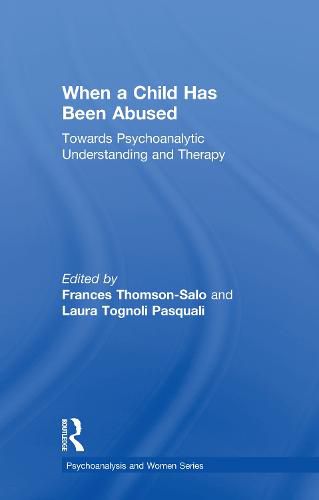Readings Newsletter
Become a Readings Member to make your shopping experience even easier.
Sign in or sign up for free!
You’re not far away from qualifying for FREE standard shipping within Australia
You’ve qualified for FREE standard shipping within Australia
The cart is loading…






This important and wide-ranging book explores the world of a child or young person who has been abused or neglected. It seeks to understand their world, to ease the pain from which they suffer, and to heal the wounds that the abuse has left.
Examining how abuse always takes place in the context of relationships, and involves a misuse of power that causes a traumatic overwhelming of the child or adolescent, abuse also evokes strong countertransference. This affects interventions, particularly when clinicians struggle with feelings of which they may feel ashamed. A difficulty in coming to terms with and addressing child abuse relates to unconscious factors which, by freezing the emotional area surrounding the abuse (or by blinding the area of personality), makes some thoughts unthinkable.
Considering traditional and novel ways of helping children who feel they have been maltreated, the book offers suggestions for individual treatment as well as describing the successful work carried out with child refugees. It also offers a glimpse into what child psychoanalysts interpret and do with children who feel a parent hates them.
$9.00 standard shipping within Australia
FREE standard shipping within Australia for orders over $100.00
Express & International shipping calculated at checkout
This important and wide-ranging book explores the world of a child or young person who has been abused or neglected. It seeks to understand their world, to ease the pain from which they suffer, and to heal the wounds that the abuse has left.
Examining how abuse always takes place in the context of relationships, and involves a misuse of power that causes a traumatic overwhelming of the child or adolescent, abuse also evokes strong countertransference. This affects interventions, particularly when clinicians struggle with feelings of which they may feel ashamed. A difficulty in coming to terms with and addressing child abuse relates to unconscious factors which, by freezing the emotional area surrounding the abuse (or by blinding the area of personality), makes some thoughts unthinkable.
Considering traditional and novel ways of helping children who feel they have been maltreated, the book offers suggestions for individual treatment as well as describing the successful work carried out with child refugees. It also offers a glimpse into what child psychoanalysts interpret and do with children who feel a parent hates them.